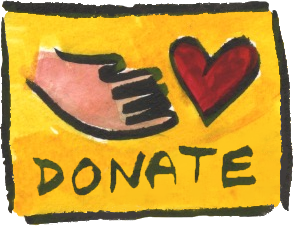Lifting Like a Baby + Simultaneous Lifting (Patrons)
Discover how baby-like games of effortlessness can make you a more poised and potent adult. Starts with explorations of how you first lifted your head while lying on your belly in your crib. Then in back-lying you'll learn to quietly, precisely lift and lower parts of your body while studying details of ground support, muscle tone, and reversibility of movement, leading to a discovery of surprising "new" baby skills at the end. Begins with a three-minute talk about the perceptual paradoxes of "effortless" movement.
We offer over 50 free lessons, but this one's just for our Patron-level donors. You can learn about it in the free lesson notes and comments below, but to access the audio you’ll need to join The FP as a Patron. Learn more
Donor Tip: Skip this login next time! See Why & How to Stay Logged In (and why it's safe)
Got a question for Nick, or a thought about this lesson?
Use the comments section below! Public comments build our community and help search engines find us.




Really exquisite lesson, which I notice provides me with a deep way to learn how to let my neck and abdominal muscles reduce and reduce their efforts. I am feeling so light and relaxed now.
Nick when I was young and struggling to be a dancer! I was involved in Martha Graham technique – would that I could have had access to this lesson then!! Graham technique was all based on contracting in the middle of the body and releasing into movement. The classes were like torture but I was addicted to the idea that it was all going to make me into a better dancer – not so, I wrecked my body.
‘we used to do an exercise called Pleadings which was pretty much what we were doing at the end of this lesson where both the head and legs were off the gorund – except that you would lift everything and bend to the side stretching both arms out to one side. It was not effortless in those days and now I wonder if Martha Graham herself knew the effortless way to do it, but for sure teachers I had didn’t have a clue. Anyway I finished off this lesson with some very effortless pleadings and enjoyed returning to them with a very different sense of them.
Just to round the story off I did wreck my body through all of that struggle, but then I discovered New Dance and Contact Improvisation and many of the things I learnt at that time had their root in techniques such as Feldenkrais although I didn’t know that then, but coming to your lessons all of these years later is like coming full circle and I discover that I am still learning. (I’m 65 now).
I often take your sessions on into movement and still rejoice that I did injure my body, because if I hadn’t this wonderful journey wouldn’t have begun and still be going on now.
Thanks so much for all of your wonderful sessions and for making them so easily available, they have been a wonderful gift for me for over a year now and came at a time of personal loss.
What an amazing story of how we can accumulate wisdom as we mature! I resonated with your gratitude for your injury: I’ve often said the same thing about my piano injury 25 years ago that led me to Feldenkrais.
I’m curious to hear about your experience with the next lesson in the Grounding for Liftoff course, Joyful Lifted Rolling. If you dive into that one, please let us all know how it goes, like you did with this comment!
So fun. I repeated this lesson after watching a friend’s twin 9 months old move around on the floor ( and experiment with rising to stand by crawling up a cooler). So I had the image of a chubby baby with little rocking movement as I experimented with different “goals”. And the pleasure I saw on their faces.